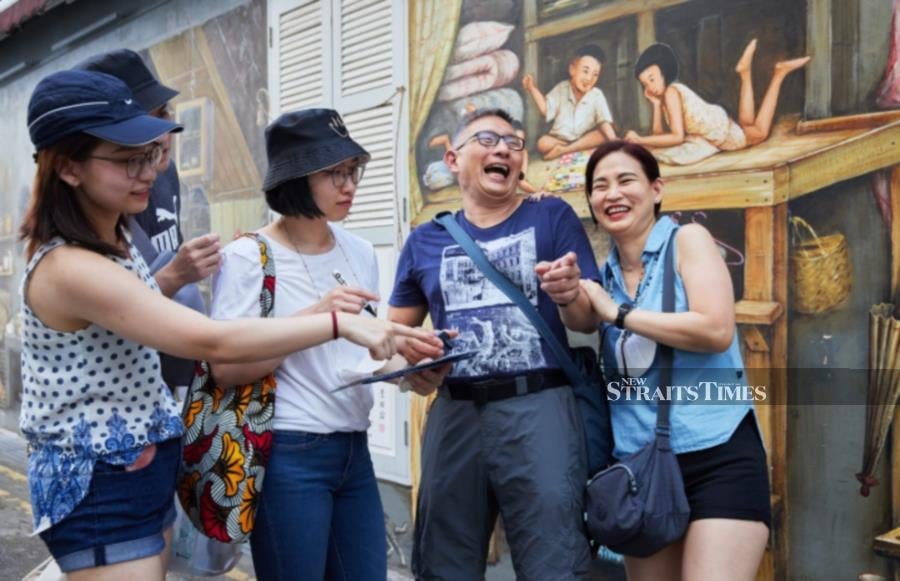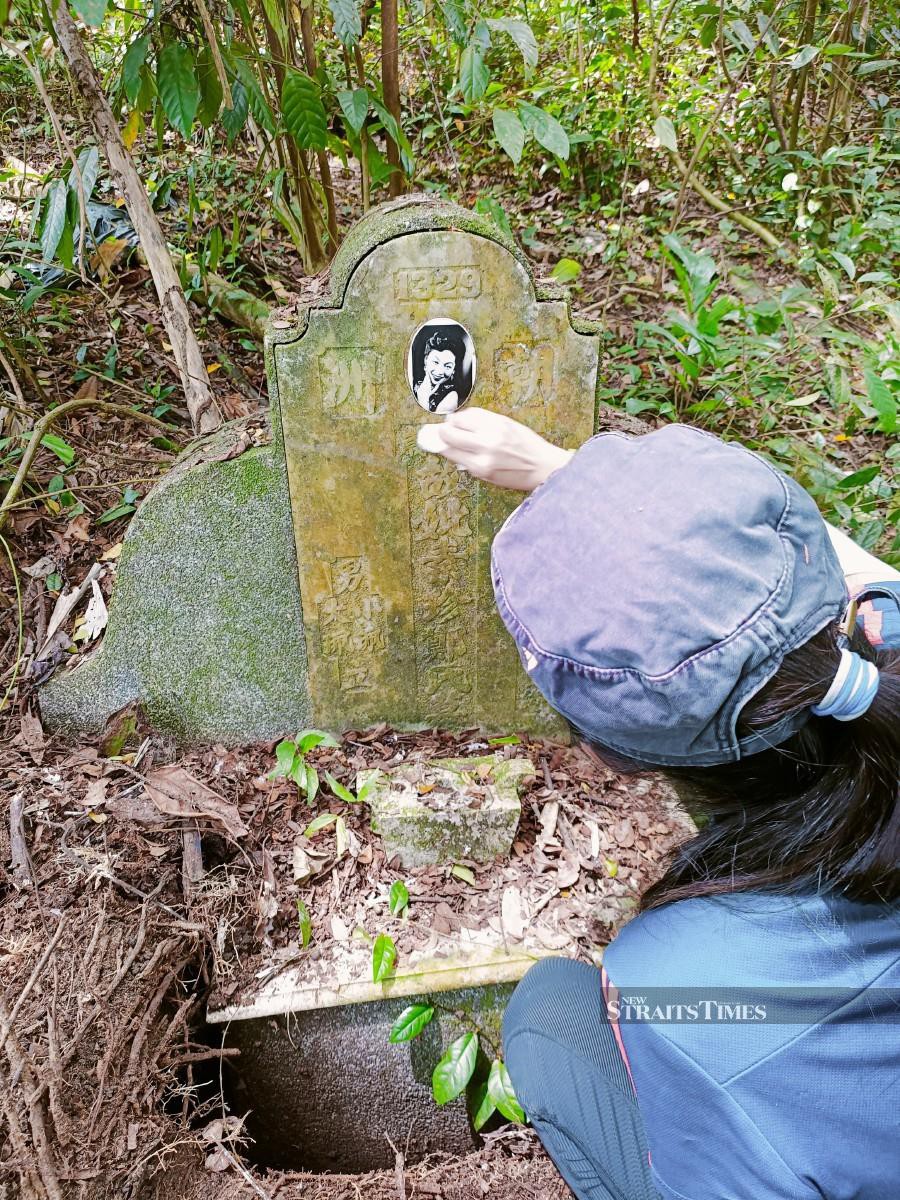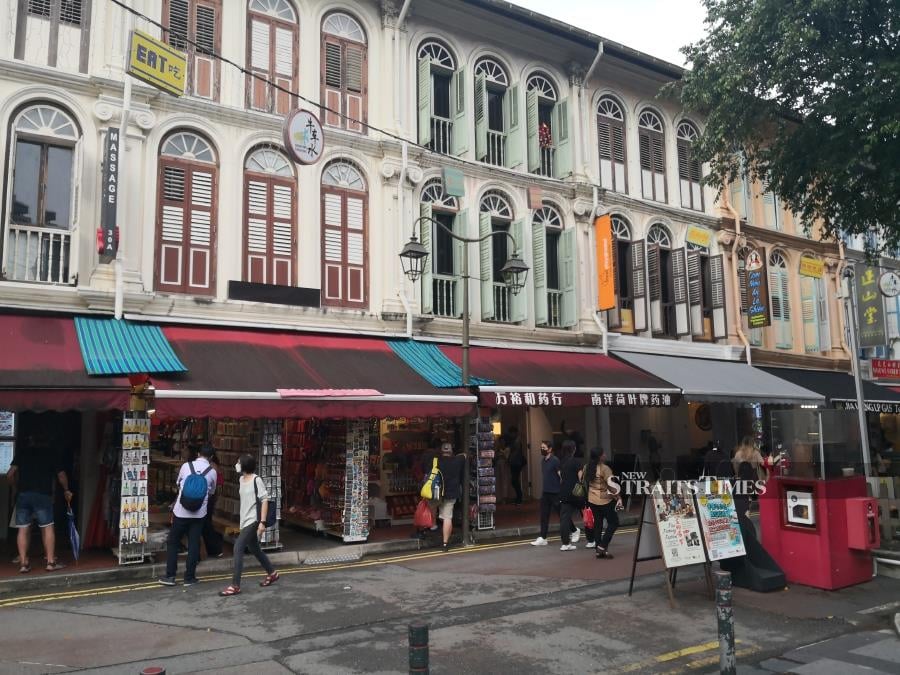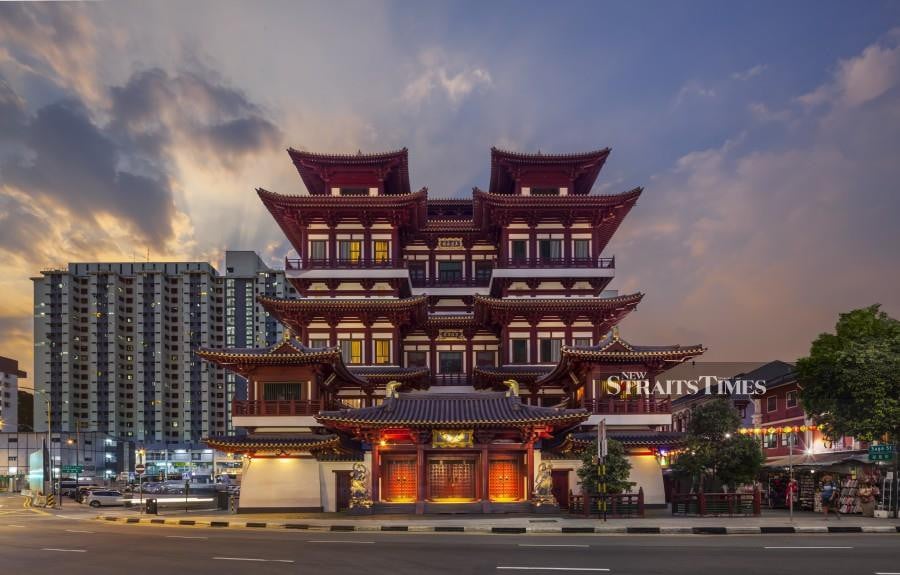ARRIVING in Singapore close to Tomb Sweeping Day (Qing Ming) is one way that you can join a complimentary tour of Bukit Brown Cemetery.
Aimed at shedding light on its history since 1872, the Bukit Brown Cemetery is an amalgamation of three Hokkien cemeteries that was officially opened in January 1922. This old graveyard is believed to contain around 100,000 graves on a land spanning 86.2 hectares, and bordered by present-day Lornie Road, Lorong Halwa and Kheam Hock Road.
Conducted by long-time Bukit Brown Cemetery enthusiast Peter Pak, the two-hour long walkabout filled with interesting tales is a real eye-opener.
Most notable are the stopovers at the final resting place of some of the island's notable figures, including a woman who contributed so prominently to society that a road was named after her; a dedicated circus performer whose grateful colleagues called the tigers she trained her children; and influential men who broke society norms to give their daughters a proper education by establishing the Singapore Chinese Girls' School.
GAME TIME

Just after the tour concludes at the grave of a woman who broke the glass ceiling by becoming the first female medical practitioner in Singapore, an email reminder for my participation in the "Chinatown Murders: Outdoor Escape Room Game" arrives.
Part of the complimentary SingapoRewards programme offered by the Singapore Tourism Board (STB) to tourists arriving by air, this tour is the perfect complement to my Bukit Brown Cemetery excursion. It not only offers the opportunity to discover off-the-beaten nooks and crannies in Chinatown while solving puzzles related to a fictitious crime, but it also allows me to see just how much Sago Lane and Sago Street have changed since the early days when they were home to death houses and undertakers.
Right from the beginning, gamemaster Law Yock Song cuts a striking figure as a character who has lived in Chinatown for 48 years. With hilarious voice impersonations, he skillfully shares the riveting tale of a murderer on the loose as the community huddles in fear. Together with fellow tourists from China, Belgium, Mexico and South Korea, I play detective in search of hidden clues to eliminate a list of suspects before finally identifying the killer.

During the course of our endeavour, the storyline takes us past key attractions that make Chinatown a major tourist attraction in Singapore today. So clever is Law in his storytelling that even the Samsui woman statue in front of the Chinatown Heritage Centre comes to life as the diligent and dedicated Auntie Geok. Our hearts go out to a mural character introduced as the unfortunate provision shop owner Ah Kee, who lost his son during the murderous spate.
Upon reaching Sago Lane, which runs parallel to Sago Street with the Buddha Tooth Relic Temple sandwiched in between, Law turns back the clock to 19th century Singapore; when both these thoroughfares were home to countless sago factories. Interestingly though, the affable storyteller also declares that the surrounding area was better known among locals at that time for its grim and depressing death houses.
BUSINESS OF DEATH

Forerunner of our modern-day hospices, these infamous collectives were the go-to places for the terminally ill to await their inevitable fate.
As Chinese immigrants lived in squalid and crammed quarters that lacked proper sanitation, superstition, until this very day, dictates that death must never occur in a house.
This observance was motivated in part by a commonly held belief that evil spirits would haunt the house where a person had died, and it would be very costly to conduct exorcisms to make the house habitable again.
Serving as a place for the dying to settle their final affairs, the upper floor of these abodes of last resort provided lodgings for the sick, aged and infirm to spend their final days in solitude, misery and, for some, in excruciating pain.
Meanwhile, the ground floor functioned as a mortuary and funeral parlour. These "death house" operators provided funeral services to ensure a proper ceremonial send-off for those who had passed on. While most admissions lived for only a few days or up to a week, a miraculous few managed to survive, recover and eventually return home!

While drawing our attention to tastefully renovated shophouses where gourmet food outlets, pubs and speciality stores bustle with endless streams of shoppers, Law declares that newly enacted health and safety regulations in 1958 marked the end of the death houses' existence.
Concerned about fire hazards from the burning of joss paper, as well as the noise and air pollution they generated, the authorities stopped issuing new licences and gave existing death houses a year's notice to move out.
After a complete ban was established in 1961, most buildings were demolished to make way for modern buildings like the Kreta Ayer Complex and high-rise apartments with shops and community centres on the lower floors. Realising a need to revive the old Chinatown atmosphere and spirit, the STB successfully conserved some Sago Lane shophouses to this day.
AMAZING REVIVAL

As the tour reached its conclusion, I decide to take some time to explore the surrounding side streets. The presence of bustling traffic and the sight of shops doing brisk business are proof enough that this part of Chinatown has successfully shed its less desirable past and progressed together with the other parts of this vibrant city-state.
Case in point is the TINTIN Singapore shop at nearby Pagoda Street, which gives me the golden opportunity to reconnect with my childhood. Opened more than a decade ago in December 2010, this first official, dedicated TINTIN merchandise store in Southeast Asia — and touted to be the largest in the world — has successfully established itself as an enduring Chinatown icon that not only attracts countless legions of tourists, but is also very much celebrated among local fans.
Browsing through comics like The Seven Crystal Balls, The Black Island and King Ottokar's Sceptre, as well as checking out model cars used by my favourite character is certainly a great way to end my day after learning so much about Singapore's interesting past.
Those arriving by flight as short-term visitors are eligible to claim one free SingapoRewards experience each. Redemptions are on a first-come first-served basis and subject to availability. For more information, visit https://singaporewards.visitsingapore.com/en.
Explore Singapore's Chinatown using Klook Voucher Code and save more.





